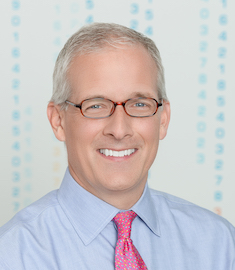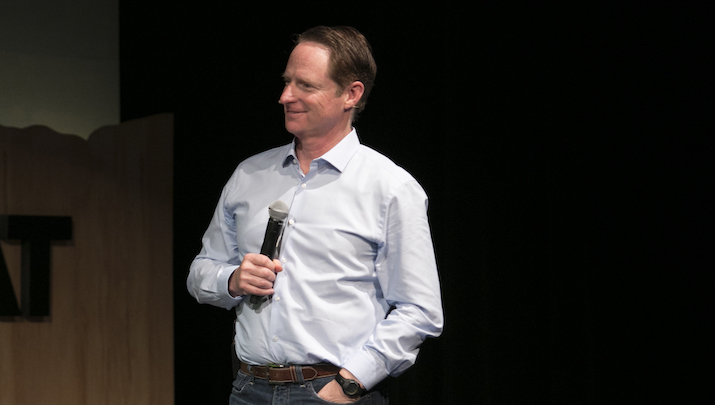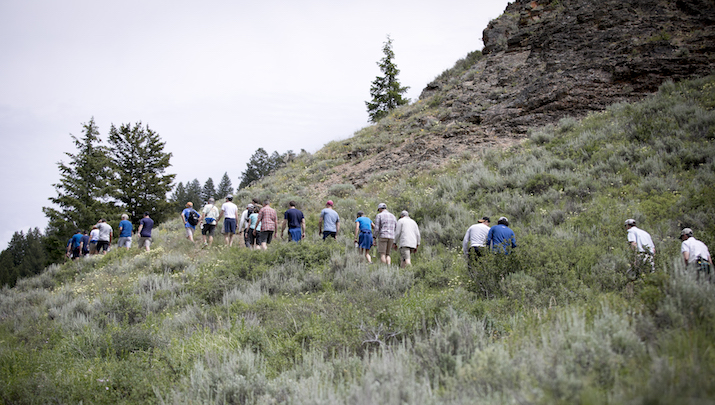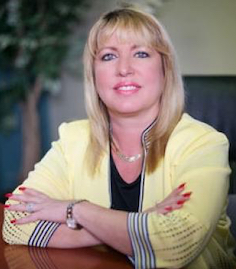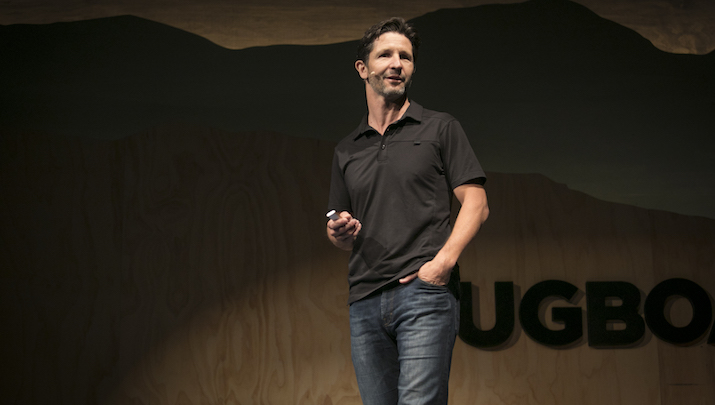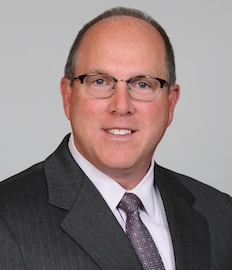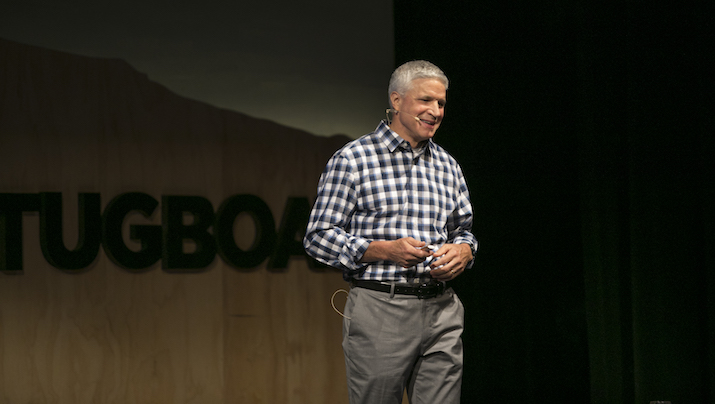The Foreign Idea that Transformed our Business
If you had told me before 2006 that one third of our team would eventually be based in India, I would have said you were crazy. I would not have thought that a firm of our size could manage and benefit from integrating foreign workers; and, I certainly wouldn’t have anticipated the professional and personal growth that our team members and I have experienced as a result of the relationships we have developed and the cultural exchanges we have shared.
The journey to our current position, wherein we employ about 50 people in the U.S. and partner with 20-25 in India dedicated to us through an India-based firm, began with a meeting I took only as a courtesy—and one I really didn’t think was going to go anywhere.
My Evergreen business, Venturity Financial Partners, headquartered in Dallas, Texas, provides accounting services ranging from AR/AP processing, monthly financials, and other ongoing back-office functions to specific one-time projects, such as audit support or budgeting and forecasting. In 2007, we were facing what had become a significant problem: We were having trouble hiring and retaining people to do the transactional services we provide—things like AP invoice entry. It was hard to attract these workers, who generally made around $12-$13 an hour; and, frankly, it was hard to get them to show up for work consistently. Managing this workforce, side by side with our degreed accountants, was proving difficult and was affecting our culture. And yet, the work they do is essential to the services we provide. It was becoming a roadblock.
It was in this context that I agreed to take a meeting with Gurunath Kanathur, the CEO of an Indian accounting firm called Pierian, who was visiting Dallas to promote the outsourced accounting services his company provides. Pierian was looking for U.S. clients who needed help with back office processing. I sat down to the meeting with low expectations. I had known of other businesses our size that had attempted offshoring without much luck. This kind of thing only works for Fortune 500 companies, I remember thinking, as I entered the meeting. But as the meeting progressed, my view changed as I began to consider how Pierian’s services could help solve the problems we were facing with our transactional workforce.
We’re always willing to try new things that will improve our service, lower the cost to our clients, and provide a better overall experience for clients and team members. The more I thought about this model, the more it seemed that it could do all those things.
We had one client in particular that had hundreds of invoices a month, requiring tedious hourly work that needed to be done really well. With this one client in mind, I told Gurunath, “you know, it could make sense for us in this instance; it would take a big burden off of us.”
We shook hands and moved forward with the idea that we would try it with this one client.We knew that, given the time difference between India and the U.S., the work would be performed overnight and we could always fix it in the morning if necessary. The benefits if it worked could be substantial, and the risk was minimal because we could always go back to doing it the way we did before.
The result was that while there was certainly a learning curve, once they got it, they got it. With the success of that first effort, we partnered with them on AP services for another account, and, before we knew it, we were doing all of our AP through them—and they were doing a great job with it. Within three years, Pierian was handling AP for all of our clients. From there, we delegated other transactional work around accounts receivable, all of which they did well.
The positive impact of this Pragmatic Innovation has been significant. Partnering with the team in India has allowed our folks here to focus on the higher-level accounting work and the more client-facing interactions, and it has also allowed us to be more of a 24/7 operation, improving our cycle time and allowing us to more efficiently get financial information in our clients’ hands. With our India team doing a lot of the routine entry work, our U.S. team has been able to focus on being a strategic resource to clients. It has also allowed our team here to move up the value chain in terms of the work they are doing, which has allowed them to grow professionally.
There have certainly been challenges along the way, and Perseverance has played a role in what is now a very beneficial partnership. It took time to work through the initial learning curve, and each time we launch a new project, we know this will be a factor. It takes time for our India team to learn the cultural context of some aspects of what we do, which we also continue to work through. We had to sell this partnership internally to our team, some of whom were concerned that it would actually create additional work for our U.S. team.And, there was some level of apprehension about the potential for a negative reaction from clients who might have a negative perception of off-shoring.
And yet, we have found that each challenge has provided opportunity for growth—professional and personal. The cultural differences have broadened our employees’ horizons and enriched our lives. By traveling to India with our U.S. team and bringing Pierian employees to Dallas, we have overcome cultural barriers and have come to know one another as colleagues and friends. The challenge of training remote, foreign employees has provided the opportunity for us to become more effective as a training and learning organization and has pushed us step up our technology platform to support our team across the world. Integrating this workforce has helped us scale more quickly, but it has also allowed us to improve the quality of the jobs we provide our Dallas team.And, as we talk to other businesses and our clients about our choice to offshore, we are generally met with understanding and admiration for what is viewed as an innovative, progressive step in service of our team and our clients, especially for a company of our size.
My advice to other Evergreen employers considering partnering with a remote, foreign workforce is this: the hurdle is not really as high as you think it is, and what you think might be a hurdle can actually be a tremendous opportunity. And, you never know when that meeting you take as a courtesy will be the one meeting that transforms your entire company.
Chris McKee is Managing Partner at Venturity Financial Partners.
The Indelible Advantage of IN-N-OUT Burger
The story of In-N-Out Burger is, like many Evergreen businesses, a love story. Esther and Harry Snyder were deeply committed to each other and to their shared Purpose of building In-N-Out Burger. Their journey and the legacy of their shared dream reflects the foundation they built of People First principles and the continual Pragmatic Innovation and Paced Growth that has led to the iconic restaurant’s lasting success.
As part of his Tugboat Institute Summit 2018 welcome address, Dave Whorton, CEO of The Tugboat Group, shares the In-N-Out Burger story as an example of a business that exemplifies Evergreen principles.
There is No Perfect Recipe for Harmony in Family Business
My family has been selling country ham in central Missouri since the 1920s, when my entrepreneurial grandfather started selling a few country hams for a bit of extra money. He ultimately constructed our original facility, the “Ham House,” in 1952, and with the help and support of his family, the business was launched. My father, along with other G2 family members, built upon that foundation to significantly scale our Evergreen business, Burgers’ Smokehouse. Today, we operate two facilities and employ 350 people, producing a wide variety of cured and smoked meats and other foods for customers throughout the U.S. and southeast Asia.
I am one of nine third- and fourth-generation family members working in the business, and all of us are keenly aware of our role as stewards of a gift that has come to us through the energy and vision of those who came before. Our shared Purpose is to perpetuate the organization to benefit employees and our community and to create value for family shareholders—indefinitely over many generations to come.
For us, remaining privately held is essential to fulfilling that Purpose. We know that as the business grows in size and complexity, opportunities for disharmony will also increase, which could potentially force a sale. As President, I’m charged with implementing structures and guidelines around family ownership and engagement that will help us avoid these pitfalls. I know that tackling family issues head on is essential if we want to be Private forever.
Here are some of the steps we have taken around family ownership and employment to help ensure the success of our Evergreen business. There’s no cookbook or perfect recipe for family harmony and business success, but these steps have been helpful to us as we’ve navigated through transition points and worked to create mileposts for the road ahead.
Family Guidelines
In the mid-eighties, when the G3s started coming on the scene, my dad could see the need for more formal structure around family involvement in and ownership of the company. He went to work creating some of our first family guidelines, which included developing entry and exit guidelines, as well as a formula for our generation to buy stock, based on our relationship to the founder. Those guidelines have continued to evolve and expand and are a living document to help guide the family around a wide range of employment and ownership issues.
Working Outside the Business
Included in the original family guidelines my dad created, was a requirement for family members to work outside the business for a minimum of two years before joining the company. He had the foresight to see that as the company and the family grew, we would need that outside work experience in the next generation. That outside experience has been invaluable and absolutely impacts the way the company is moving forward today. The family members who spend time working in other organizations develop strong skill sets in a variety of areas and come back with life experiences and skills that benefit the company.
Summer Work Program
We have developed a summer work program that really does a good job of helping family self-select whether or not they want to come back to the family business and build a career. Family members can start around age 14-15, and while current labor regulations don’t allow for hands-on work in the plant as was standard in my generation, we offer opportunities for them to work outside the walls of the plant or on our farm, which provides work experience at an early age. It’s not glamorous work—they are painting and weeding and helping check tasks off a list of things that need to be done each summer around our property—but it provides important insight into the company and the scope of our operation.
Family Education
When my dad began developing guidelines, our generation (G3) started meeting as a junior board. We would hear from guest speakers—bankers, insurance experts, other business professionals. My dad also brought in an advisor at that juncture who provided insight into succession and transition issues. We have continued to learn from outside experts, and, just this past year, I hosted a Saturday workshop for family members and presented the family with a comprehensive guidebook that included the guidelines, policies, and procedures that we want family to understand. As we educate family, our aim is to be very intentional about family management and ownership—and that they are different and come with unique rights and responsibilities.
Family Council and Family Board
We’re at an interesting transition with the structure of our family meetings. The Family Council numbered about 15 active members when it was formed in 1994 to build a stronger family and continue refining the guidelines established earlier. In recent years the Family Council has been on autopilot. The family now totals 50 people and counting, rendering a direct democracy too unwieldy to be productive. We are currently developing a Family Board consisting of members representing various branches of the family to review guidelines and plan social events.Recommendations will be brought back to the Family Council. The purpose of the family governance is to address how the family interfaces with the business. Corporate governance is the responsibility of the Corporate Board.
Corporate Board Composition
One of the best things we ever did was include three outside directors on our Corporate Board, which has been really important. I don’t think we’d be where we are today without their influence. The Corporate Board also consists of four family members who work in the company.We are currently strengthening the outside board members’ presence on our salary committee and are using benchmark data to ensure that we’re paying market prices for the positions that family members hold and that those don’t get either inflated or deflated. We may expand the board to nine members by adding another outside member and a representative from the newly formed Family Board.
Seek Out Resources and Advice
For our family, a key to managing family dynamics and guidelines has been to tap into the many resources out there today around these topics. There is a plethora of books and experts and university programs that exist for the perpetuation of family businesses. Know that you are not alone; the challenge you face is nothing that hasn’t been faced by probably every family business in one way or another. Seek out those resources and opportunities. You may also want to consider working with a consultant who has had experience with a lot of different families and can provide best practices for any family business at their particular stage, size, or family dynamic. There are things you do in a start-up family business that you don’t have to concern yourself as you progress through multiple generations. The level of complexity and issues change from generation to generation.
Conclusion
It’s a very gratifying and humbling experience to have a part in passing on a family business from one generation to another. For me, growing up in a second-generation family business, working through the challenges and issues of moving into third generation employment, and now taking the knowledge from 35 years and sharing what I’ve learned with a new generation has stretched me as a business and family leader, but in the end, has been a gift.
Steven Burger is President of Burgers’ Smokehouse.
Earliest Lesson in Perseverance
Evergreen leaders share a commitment to the long view as they build and scale their businesses. For many, lessons in perseverance and grit learned early in their lives have been formative in their approach to business. At Tugboat Institute Summit 2018, members told stories of their earliest experiences working through challenge to accomplish goals and find success.
Purpose in the Pipeline
Here’s a little plumbing 101: It takes a minimum of 8,000 hours of combined on-the-job training and classroom instruction for an apprentice plumber to test to get a journeyman’s license. That means a person will likely work three-to-four years in the trade before he or she can even test for their license; after that, if the goal is a master plumber license, that requires another four-to-five years.
The extensive process is critical. While plumbing is an often under-appreciated trade, the reality is that licensed plumbers serve communities in essential ways, protecting people’s health by helping ensure the availability of clean water and functional sanitation equipment and gas lines. Modern plumbing has saved more lives than modern medicine.
At our Evergreen business, Charlie’s Plumbing, we train plumbers to enter into the trade through our apprenticeship program and ongoing training opportunities. Stepping into the apprenticeship program is a transformative opportunity for many. Vocational training was largely removed from high school and community college curriculums in the early 2000s, and while it has been reintroduced to an extent in recent years, plumbing programs are few and far between in Texas. For that reason, we work hard to make young people aware of the meaningful and well-compensated work available in the trade through career days, technical classes, and other venues. We want them to know that if they entered an apprenticeship after high school, they could be a licensed journeyman by 22 or 23.
And while we do bring young people into our program, it’s not uncommon for people to come to the plumbing trade later in their career path. In fact, the average plumber gets his or her license at 36. Many of the people who choose this path may have left high school with no sense of what they wanted to do, so they’ve bounced around between jobs without developing a strong set of skills; life may have intervened in various ways to get in the way of their getting a college degree. This industry and the training they receive as an apprentice can offer a fulfilling, lasting career, and we’re proud to be growing this workforce and introducing skilled, good people to the industry.
Once people find their way to us, my goal is to offer them the best training resources to develop their skills. While much of apprenticeship training is hands-on work with experienced licensed plumbers on our team, we have also developed on-site training facilities, including a “sandbox” that allows them to learn how to run underground piping and practice blue print reading and a training area equipped with pipe fitting materials, boilers, water heaters, and other materials to practice skills. And, we’ve just recently added a “dollhouse”—a miniature house that provides a practice model for building to-scale plumbing structure, which mirrors what they will have to complete on their license test.
Certainly, I’m motivated in these efforts by the very real labor shortage and lack of vocational training available for those who are interested in entering the trade. But for me it runs deeper. While the apprenticeship program allows us to provide the commercial and industrial plumbing services that are the core of our business, it also allows us to fulfill our Purpose: to provide really good jobs and to be a home for our employees.
It’s that Purpose that inspires me to offer not only a robust benefits package but a work environment, technology tools, and personal development opportunities that reflect an employee’s value to our business. Even more important, I want employees to feel included and engaged because I think at the end of the day that’s the most important benefit I can offer. I want each person to know that when I ask, “What is it that you would like to offer the business?” or “How can we make you feel you are part of the team and that your opinion matters?” that I truly want to know. Our business will grow and thrive when people are invested and feel heard.
I think that while the definition of “a really good job” continues to evolve in the current labor market, especially for the younger generation, the lasting, authentic benefit of providing an employee a sense of value and a workplace that feels like a place to come home to is what matters.
Merrill Crawford is the CEO and President of Charlie’s Plumbing.
Long Term Thinking in a Short Term World
We all have our own cognitive maps, unique to us and determined by our individual experiences and history. Sometimes, these maps can be limiting—in business and in life. While challenging, having the courage and Perseverance to see beyond the borders of your own cognitive map—and those of others—can lead to transformative expansion, innovation, and success for Evergreen businesses.
In his presentation from Tugboat Institute Summit 2018, Arpad Molnar, Co-Founder and Managing Partner of Obsidian Wine Co., shares his experience building a business that has continually disrupted the cognitive map within his industry and has maintained a steadfast focus on the long term, rather than on short-term gains.
Evergreen in Hollywood
There’s an oft-repeated quote in Hollywood: “They come, they go, who called?”
The originator of that quote, Lew Wasserman, was the godfather of all talent agents. He ran the legendary MCA, bought Universal Pictures, was forced out of the agency business by the government for his monopolistic control of the talent and their work, was considered the link between Mafia money and Hollywood, and famously helped elect Ronald Reagan as President—among other famous (and infamous) points of notoriety.
He wasn’t exactly Evergreen. His 7Ps were: 1.) Plunder, 2.) … Well, now that I think of it, all seven were plunder.
Building a 100-year company has never been the priority in Hollywood. In an industry where everything revolves around what sells right now, short term thinking rules. Ethics and morality are considered conveniences at best in the pursuit of transient power. Making a living off pop culture in a landscape wherein this year’s investment is worthless by next year tends to bring out the worst in people and the businesses they build. The culture breeds cynicism.
I began my career as an actor and musician. I did well in my twenties, making a living in theater, TV commercials, and recording sessions. Invariably, I was cast as a 16-to-19-year-old. Then I woke up one morning and didn’t look 16-to-19 anymore. Too old to play a teen, too young to play a Dad, they stopped casting me. It all fell apart.
Almost 30, married with two young children, I moved over to production to make ends meet. I worked on TV commercials, driving equipment trucks and working my way up. Six years later, as an Executive Producer, I cast off the 16-hour days to become an agent. As an actor, I had seen my agents as a necessary evil.It was the thing I swore I would never be.But, the family had to eat, and there was an opportunity, so… never say never.
Twenty-three years, one big agency experience, one start-up and two mergers later, I am Co-Founder and CEO of Worldwide Production Agency (WPA). We’re a mid-sized agency in a large-sized agency marketplace, with offices in Los Angeles and London.
When we started WPA in 2010, we were a small, boutique agency that operated in guerilla mode, recruiting clients away from the big agencies almost at will. Able to move quickly and do things they couldn’t was our advantage and USP. But then things changed. The big agencies, in response to increased competition with one another, began eating boutiques like us, stripping out as much talent as possible as quickly as possible. Essentially using boutiques as talent farm teams, they culled the most lucrative employees and talent from the smaller firms, seeking out the self-propelling money-making machines and ignoring the foundational work of agencies to nurture and grow talent.
With the pressures of those large agency tactics propelling us, over the past five years we’ve scaled at a rapid pace, growing our client list from 70 to over 400, leaving the boutique mantle behind, and entering the mid-size market, with offices in Los Angeles and London. The strategy is to grow talent as we always have, yet to be able to sustain sudden and unexpected client losses.
So, what then becomes our USP?In truth, I didn’t know what USP—nor ROI, ROE, or ROA for that matter—until several years ago. I am a self-trained executive, and my only guiding principles were constant learning and trying to do the right thing. In many ways, I’m glad I didn’t know what I didn’t know.Ignorance of traditional business practices may have led me to take bolder risks—but also to be less prepared to operate at scale.
Then I came across Evergreen.
When I read the interview with Tugboat Institute founder Dave Whorton in Conscious Company Magazine, I knew I had found the thing missing in Hollywood and what I was looking for to establish guiding principles for WPA. I saw that an Evergreen orientation could replace the USP that had been lost through rapid growth.
The process of introducing and reinforcing the concepts of Evergreen in our company has been a journey, and the progress has been slow but steady. It’s an orientation that goes against the grain of the common agency model, wherein each agent is treated as an entrepreneur running an individual business under the banner of the agency. It’s a model that breeds competition, secrecy, and fiefdoms inside the walls. It encourages hoarding of information and dis-incentivizes teamwork. Perhaps good for the bottom line, it’s terrible for employee morale, turnover rate, and, most important, for servicing clients.
When the agency is smaller, these issues are not much of a problem.When you have five employees, you generally know what everyone is doing, and the information is easy to share. The common goal is to survive. When you scale to over 25 employees and have grown at the rate we have, when survival is no longer at stake, you then need a common philosophy to make sure you’re all headed in the same direction.
Now, the Evergreen 7Ps are that shared direction. Because the concept goes so against the grain of the Hollywood way, it needs constant reinforcement to get into the fabric of the company culture. It sounds good enough, but applied to an aggressive, take-no-prisoners industry, it can appear “soft” regardless of its inherent power. Like I said, the progress has been slow but steady.
I’m selling those around me on building a new Hollywood: Less carnivorous and more humanistic than in the past; less known for the Harvey Weinsteins and Lew Wassermans than for exceptional working environments that support high creativity and a pop culture that helps lead society in a better direction.
It is not easy.It means going our own way in a town where there is safety in numbers. There is irony in the fact that a herd mentality can exist in a market that is in essence a race to the newest, shiniest thing. Conversely, safety also is in going with the flow and never upsetting the balance of power too much or too quickly. Being the outlier can be dangerous.
There will always be tremendous profit to be made in Hollywood.It’s the land that casts dreams and gives people hope through stories, and that pays. Of course, there will always be the occasional nightmare, and that pays too, but there are some of us now who are pursuing something better: Sane companies, based on the 7Ps or similar forward thinking and evolving philosophies. It can be done. Perhaps a new mantra is at hand: “They come, they succeed, let’s keep doing it for 100 years.”
Steven Jacob is Co-Founder and CEO of Worldwide Production Agency.
Wired for Optimism
When I was a sophomore in high school, I wrote a report in biology titled, “The Positives of Positive Thinking.” I’d chosen the subject because I was, to put it mildly, not science-minded. I remember that the research and writing was an agonizing process, but I found myself intrigued by the data around the impact of optimism. From my earliest memories, people had always noted my positive nature and ready smile. While I certainly have moments of sadness and anger, I don’t think I’d be exaggerating if I said I have a smile on my face most of the time. I’m just wired that way.
I got an A on that biology paper, and I still remember the comment that my teacher wrote on the top of the first page: “I don’t know if this is BS, but if you can keep this thought process, it will serve you well.”As I reflect on the power that positive thinking has played in my life since—personally and professionally—I can say unequivocally that she was right.
I always look at the positive side of life; it’s what drives me. Even when people bring me negative thoughts or experiences that are difficult to discuss, I really try, in my response, to reflect my affection for that person and to show them that there is a positive side to all experiences. I see my outlook reflected in the way my own children view the world and their responsibility to effect positive change, and I see it in the culture of the Evergreen insurance brokerage firm, Johnson Kendall Johnson, where I serve as managing partner.
All of this is not to say I have not encountered challenge and personal heartbreak in my life. My father passed away when he was only 61, and I lost my older brother when he was 52. Both were significant losses that deeply affected our close-knit family. Several years ago, when my eldest son and his wife suffered a miscarriage, I felt the pain of an early, unexpected loss again. During a conversation with my business partner and dear friend at that time, I said to him, “I don’t know how to manage this; bad things don’t happen to our family.” His response offered meaningful perspective; he said, “Bruce, of course bad things happen to you—it’s just that your outlook on life means you always look to see the upside.” I realized that he was right: I live through challenge like anyone else, but my natural inclination is to move forward from a place of hope and with an expectation of good.
This deeply ingrained sense of optimism likely makes me uniquely suited for the insurance business, where our work every day revolves around helping our clients build, sustain, and grow their business—often in the face of significant challenge. Our mission is to deliver strategy and solution, and we often do that in the midst of emotionally-charged situations that create stress and uncertainty. Being able to respond in an optimistic, forward-thinking way serves our clients well.
I recently witnessed the essential role of optimism in our work when a client suffered a significant fire. The fire broke out in the night, and our claims group and I were on the scene by 7 a.m. We remained on site all day—and many days thereafter. We came to realize that after the first responders departed, we were the most stable presence for our clients during the months that followed as they worked through the damage assessment, healing, and reorganization and planning that the situation required. And we weren’t just there to write checks; we were there to offer the expertise and assurance that they desperately needed. We were there to offer hope—and to deliver on that promise of a brighter day. We are honored to offer clients the experience and stability, the peace of mind, that sees them through difficult times. And, in this case, we were thrilled to be on hand for the groundbreaking of their new facility; they are rebuilding and anticipate opening a new facility in the months ahead.
This specific situation displayed how critical a positive outlook is in our business, but it’s certainly not a unique scenario. Optimism is essential across every part of our business, and we intentionally recruit for positive, solution-oriented people. Each time we encounter a challenge or face a tough decision as a group, I frame the conversation by saying, “I understand the problem; now let’s determine the best way to solve it.” Led by a positive outlook, we move forward together on behalf of our clients.
That strong desire to serve our clients not only motivates us to find positive solutions for every day, it also compels us to stay Private. In an industry landscape rife with mergers and acquisitions, we are committed to remaining independent so that we can continue to serve the client and the community in the best way possible. That’s what makes our glass half-full.
I didn’t know when I wrote that paper for my high school biology class just what a central role “positive thinking” would play in my professional life. I only knew that I had a distinct outlook in life. I saw the good in people and in the world around me. I’m happy to know, now, that my personal outlook has helped me provide solutions and lead others to navigate their way to the bright side.
Bruce White is Managing Partner at Johnson Kendall Johnson, a full-service insurance brokerage and risk management firm.
Building Teams Behind the Scenes
As a cinematographer on feature films, I’m responsible for the look of the film and for taking the director’s vision and translating it visually—getting inside his or her head and interpreting how that person wants the story to look and feel. In the simplest terms, the work my crew and I do to choose the right cameras and lighting, select locations, set up for each scene, and operate the equipment to deliver the visuals transforms the words of the script into cinematic entertainment.
As you can probably imagine, building teams of professionals to do this work skillfully and efficiently—often across multiple, wide-ranging locations and under the financial and time pressures of a film’s production cycle—can be challenging. Part of my responsibility is to hire the lead team member for the three departments that I manage—camera, lighting, and grips—and then delegate the staffing of each of those departments to that lead. All of us work as contract or freelance employees, so the team has to be built from scratch for each project.
While the responsibility of managing this human resource aspect of my job is not something I envisioned as an artsy film student, I’ve come to embrace the role—it’s truly satisfying to work with interesting people and create a professional environment that’s positive and fulfilling for the team that comes to work for me each day. Over the years, I’ve come to realize that my approach to building and managing crews is not the norm on film sets. Though these positions are essential to the film’s production, these professionals are often not treated very well and don’t feel valued. Many film sets are antagonistic, and crew members can be miserable. Terrible stories circulate about sets where yelling and even physical altercations are standard.
This is crazy to me—we’re all so lucky to be doing this work. Why wouldn’t we want to create a positive environment and enjoy our time on set? That just seems like a better way to live. With that in mind, I do my best to bring together people who I know will create a positive environment and do good work and then manage them with respect.
The foundation of teams is, of course, the people you bring together. When I was young I just wanted to work with the most experienced people, but I learned that even though many of these people have incredible credits to their name, they may not be the best people for the job. Early on, I hired some people who weren’t team players or whose egos were really big or who were aggressive or antagonistic or dishonest. For me, character has become a priority; it has taken decades, but I’ve built a list of stellar human beings that I draw from now when I build my teams. I’m lucky I have found these people.
Once assembled, my approach to managing my crew reflects my own personality and the influence of mentors I’ve learned from over the years. I have a naturally calm demeanor, which determines how I interact on a regular basis, and I owe a lot to my experiences working with a friend from film school, a director named Zack Snyder. We’ve worked together on many movies, and early on I noticed the respect he extends to everyone and how that impacts the tone on the set. He truly values each person’s insight and treats people well. I don’t know how conscious I was in the beginning of developing a specific style that reflected that ethos, but once I became conscious of the impact and value of that environment, I made it a priority to lead in creating that People First dynamic.
With the right team in place and a shared satisfaction in our contributions, we’re able to be productive and efficient on set. With an average budget of $1M per day, that makes a big difference. As I watch my crew work, it’s also satisfying to see the way the group we build is perceived by the broader team as they contribute beyond their responsibilities. There can be inter-departmental strain on some sets, but my team will generally offer to help others, and I can see the surprise this evokes among people who aren’t used to being supported beyond their own department.
At the end of the day, even with the intensive planning, preparation, and team building, the reality is that each production is really a circus tent of craziness. Most of the time we’re just trying to keep our heads on straight. But if my team can be some part of reigning in the chaos and delivering an end-product that we can all be proud of, that’s a great feeling. I try to accept the challenge of each new project, carry out my role with grace, and make people feel good about the work they do each day.
Larry Fong is a cinematographer best known for his work on 300, Watchmen, and Kong: Skull Island, among others. He is an active member of the American Society of Cinematographers and was a speaker at Tugboat Institute Summit 2018.
Finding the Joy in Unpacking
In business and in life, many of us fill our packs with emotional, physical, and professional weight that can impact our ability to move efficiently and in good health. Intentionally unpacking obligations, habits, and control that don’t serve us can create opportunity for transformative growth—in self and in Evergreen business.
In his presentation from the Tugboat Institute Summit 2018, Joe Motz, President and CEO of The Motz Corporation, describes the pivotal, personal experience that set him on a journey of intentional unpacking and the joyful changes that process has brought to his business and his physical and emotional wellbeing.
